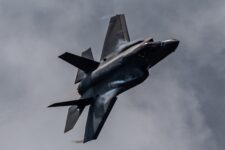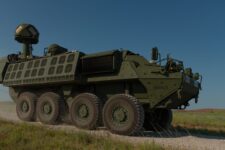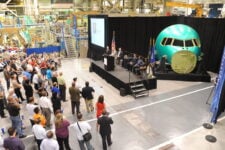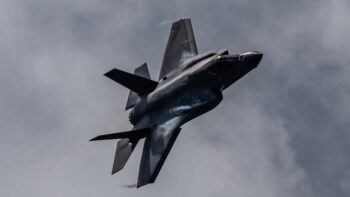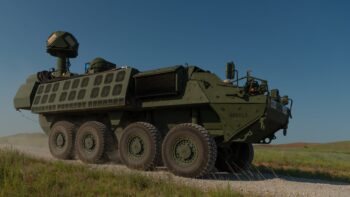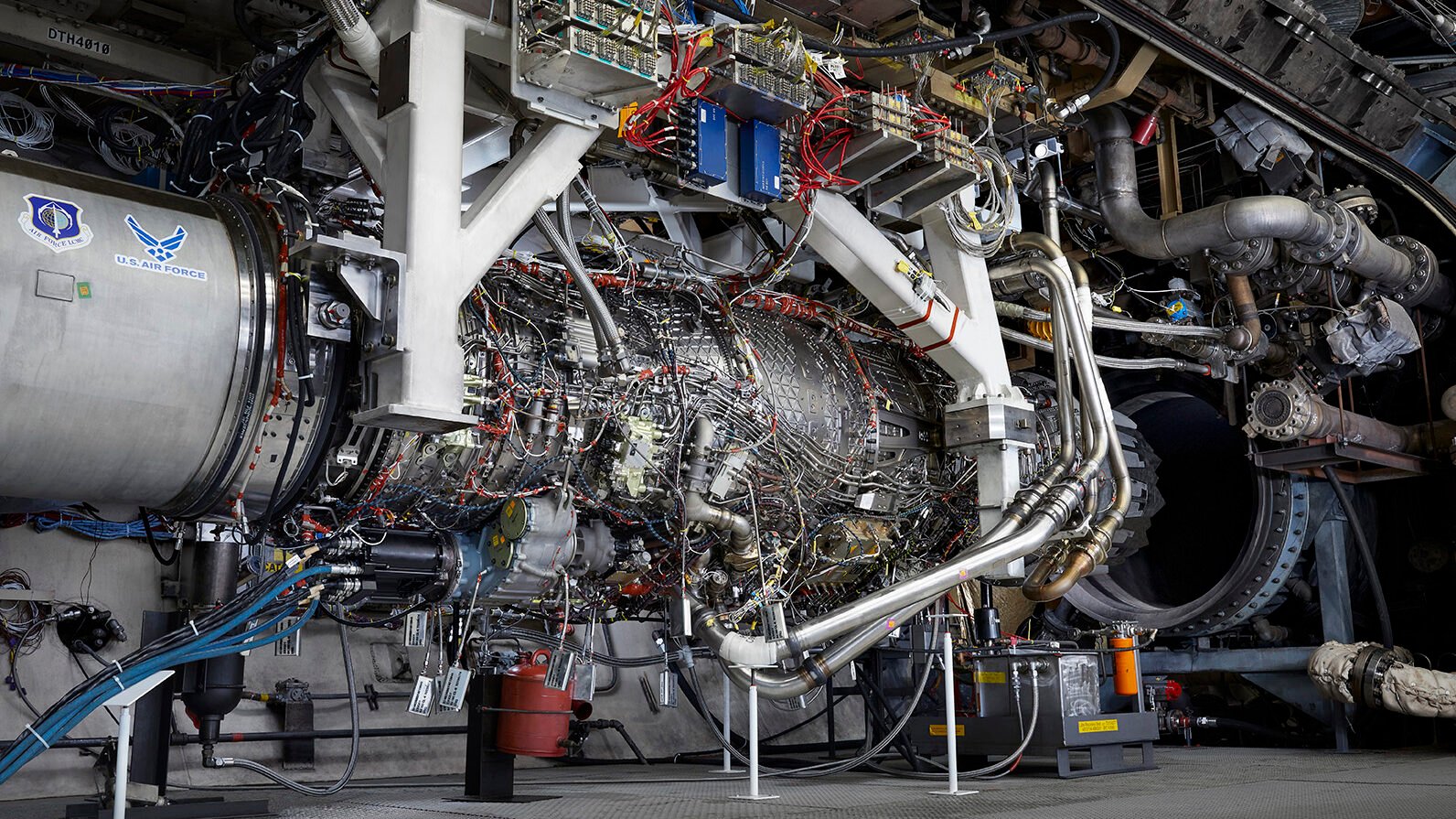
GE’s first XA100 prototype engine readies for testing in an Evendale, Ohio, test cell. (General Electric)
WASHINGTON — American industrial behemoth General Electric today completed the spin off of its aviation and energy businesses, launching GE Aerospace as a standalone company.
The event is the final step in the long-awaited break up of General Electric into three individual companies, first announced in 2021, and signifies a new age for one of the two major US aviation engine manufacturers, with its defense engines unit making up about $9 billion of GE Aerospace’s $32 billion portfolio.
GE Aerospace CEO Larry Culp, who has led General Electric since 2018, rang the opening bell on the New York Stock Exchange this morning, celebrating GE Aviation’s transition into a publicly traded company alongside the energy spinoff GE Vernova. GE Health Care launched last year.
“Building on a century of learning and carrying forth GE’s legacy of innovation, GE Aerospace moves forward with a strong balance sheet and greater focus to invent the future of flight, lift people up, and bring them home safely,” Culp said in a statement.
General Electric’s aerospace unit has remained largely steady even as the company floundered following the 2008 financial crisis, which forced the US government to bail out its GE Capital banking unit.
While commercial engines — particularly the CFM56 LEAP engine it produces with French engine maker Safran and is used in Boeing 737 MAX and Airbus A320neo narrowbody planes — will continue to make up the backbone of the company, its Defense and Propulsion Technologies unit “are very well positioned given lively defense spending trends over the next decade,” Culp said during a March investors day.
GE Aerospace produces the propulsion plants for military planes such as the F-15EX, F-16, E-7 Wedgetail and T-7 training jet, as well as helicopter engines for the UH-60 Black Hawk, AH-64 Apache and CH-53K King Stallion.
The company expects mid- to high-single digit growth for its defense unit in 2024, driven by increased engine shipments, and sees strong interest from international customers like Japan and South Korea for GE engines to power homegrown combat aircraft currently in development, executives said at the investors day.
Although the Pentagon has decided not to replace the F-35’s Pratt & Whitney-made propulsion plant with a new model, another major defense opportunity could be on the horizon as the US Air Force continues development of advanced engines for its Next Generation Air Dominance (NGAD) fighter jet.
Last summer, Air Force propulsion chief John Sneden told reporters the service plans to fund Next Generation Adaptive Propulsion (NGAP) prototypes from both GE Aerospace and Pratt & Whitney instead of cutting one competitor early in 2024. The winner of the NGAP competition will power the NGAD fighter jet.
Culp said in March that the GE Aerospace would be willing to continue to put company money into its advanced XA100 engine, thought to be the basis of its NGAP design, “if and when that’s required to progress the technology developments.”
Backlog of upgraded F-35s could take a year to clear: GAO
“I’m not looking in any way, shape, or form to re-litigate how we got here, where to place blame. I don’t care. At this point, I don’t care,” said Rep. Rob Wittman.
